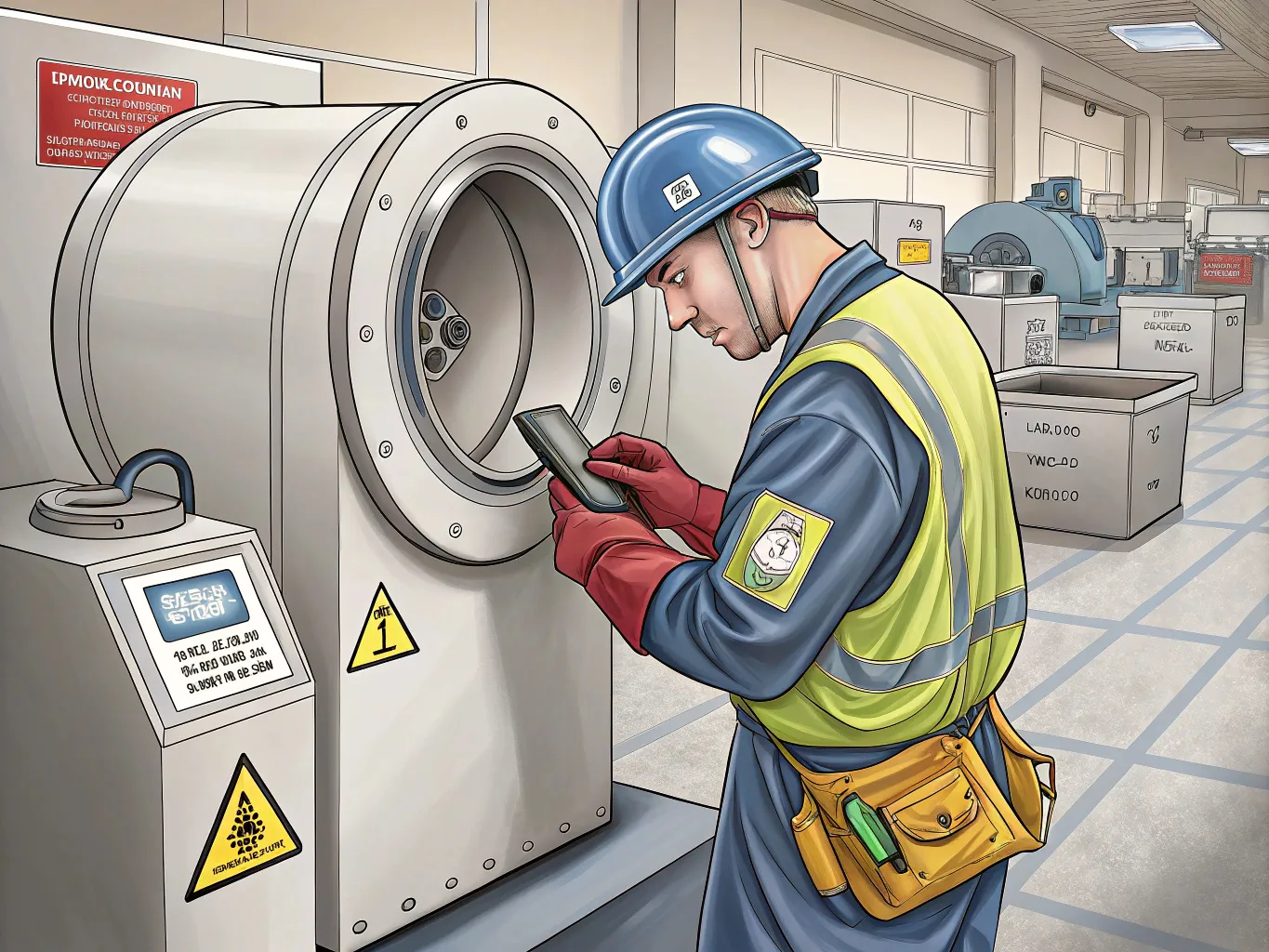Centrifugalne sušače igraju ključnu ulogu u recikliranju plastike učinkovitim uklanjanjem vlage iz plastičnih kuglica, pahuljica ili ponovnog mljevenja. Pravilno održavanje i njega ključni su kako bi se osiguralo da ovi strojevi rade s vrhunskom učinkom i traju godinama. Zanemarivanje održavanja može dovesti do skupih popravaka, zastoja i smanjene učinkovitosti. U nastavku navodimo praktične savjete koji će vam pomoći da povećate životni vijek vaše centrifugalne sušilice.
1. Pridržavajte se redovnog rasporeda održavanja
Uspostavite dosljednu rutinu održavanja kako biste spriječili trošenje i habanje. Redoviti pregledi pomažu identificirati potencijalne probleme prije nego što eskaliraju. Ključni zadaci uključuju:
- Dnevne provjere: Provjerite ima li neobičnih zvukova, vibracija ili curenja. Provjerite rade li sve komponente ispravno.
- Tjedne inspekcije: Provjerite stanje sita, brtvila i ležajeva. Očistite sve nakupine plastičnih ostataka ili krhotina.
- Mjesečno održavanje: Podmažite pokretne dijelove, kao što su ležajevi i komponente motora, prema uputama proizvođača. Zategnite labave vijke i spojeve.
Strukturirani raspored održavanja smanjuje rizik od neočekivanih kvarova i produljuje vijek trajanja sušilice.
2. Redovito čistite sušilicu
Plastični ostaci, prašina i vlaga mogu se nakupiti unutar sušilice, što dovodi do začepljenja i smanjene učinkovitosti. Redovito čišćenje sprječava nakupljanje i osigurava nesmetan rad. Usredotočite se na ova područja:
- Zasloni i filtri: Očistite ili zamijenite rešetke i filtre kako biste održali pravilan protok zraka i spriječili začepljenja.
- Rotirajuće komponente: Uklonite krhotine s rotora i drugih pokretnih dijelova kako biste izbjegli neuravnoteženost koja može oštetiti stroj.
- Područja pražnjenja: Osigurajte da žlijeb za pražnjenje nema prepreka kako biste održali dosljedan protok materijala.
Čišćenje ne samo da poboljšava performanse, već i smanjuje opterećenje motora i ostalih komponenti.
3. Pratite i zamijenite istrošene dijelove
S vremenom će se određeni dijelovi centrifugalne sušilice istrošiti zbog stalne uporabe. Redovito provjeravajte i mijenjajte ove komponente kako biste izbjegli daljnja oštećenja:
- Ležajevi: Istrošeni ležajevi mogu uzrokovati pretjerane vibracije i buku. Zamijenite ih odmah kako biste spriječili oštećenje motora ili rotora.
- Brtve: Oštećene brtve mogu dovesti do curenja i kontaminacije. Redovito provjeravajte brtve i po potrebi ih zamijenite.
- Zasloni: Poderane ili začepljene rešetke smanjuju učinkovitost sušenja. Zamijenite zaslone kada pokazuju znakove istrošenosti.
Korištenje visokokvalitetnih zamjenskih dijelova osigurava kompatibilnost i izdržljivost, što pridonosi dugovječnosti sušilice.
4. Optimizirajte radne uvjete
Rad sušilice u pravim uvjetima smanjuje opterećenje stroja i sprječava prerano trošenje. Slijedite ove najbolje prakse:
- Izbjegavajte preopterećenje: Preopterećenje sušilice može opteretiti motor i smanjiti učinkovitost sušenja. Uvijek radite unutar preporučenog kapaciteta.
- Održavajte odgovarajuće brzine: Rad sušilice na pogrešnim brzinama može uzrokovati prekomjerno trošenje komponenti. Podesite brzinu prema materijalu koji obrađujete.
- Kontrolirajte razine vlage: Prekomjerna vlaga u ulaznom materijalu može preopteretiti sušilicu. Prethodno osušite materijale kada je potrebno kako biste smanjili opterećenje stroja.
Optimiziranje uvjeta rada ne samo da produljuje vijek trajanja sušilice, već i poboljšava kvalitetu reciklirane plastike.
5. Prometnici i osoblje vlakova
Odgovarajuća obuka osigurava da operateri ispravno koriste centrifugalni sušač i učinkovito obavljaju zadatke održavanja. Ključna područja obuke uključuju:
- Postupci pokretanja i gašenja: Naučite osoblje kako sigurno pokrenuti i zaustaviti sušilicu kako bi se izbjeglo nepotrebno trošenje.
- Rješavanje problema: Obučite operatere da prepoznaju i riješe uobičajene probleme, kao što su neobični zvukovi ili smanjena učinkovitost sušenja.
- Zadaci održavanja: Osigurajte da osoblje zna kako obavljati rutinsko održavanje, poput čišćenja i podmazivanja.
Dobro obučeno osoblje smanjuje rizik od pogreške operatera, što je čest uzrok oštećenja opreme.
6. Koristite kvalitetne materijale i maziva
Materijali i maziva koje koristite izravno utječu na rad i životni vijek vašeg centrifugalnog sušara. Slijedite ove smjernice:
- Visokokvalitetna maziva: Koristite maziva preporučena od strane proizvođača kako biste smanjili trenje i trošenje pokretnih dijelova.
- Izdržljivi zamjenski dijelovi: Investirajte u OEM (proizvođač originalne opreme) dijelove kako biste osigurali kompatibilnost i pouzdanost.
- Odgovarajuća sredstva za čišćenje: Koristite nekorozivna sredstva za čišćenje kako biste izbjegli oštećivanje komponenti sušilice.
Korištenje pravih materijala i proizvoda pomaže u održavanju učinkovitosti sušilice i sprječava nepotrebno oštećenje.
7. Provoditi periodične stručne preglede
Dok je redovito održavanje u kući neophodno, periodične inspekcije od strane stručnjaka mogu identificirati skrivene probleme. Zakažite profesionalni servis barem jednom godišnje kako biste:
- Procijenite stanje unutarnjih komponenti.
- Provedite naprednu dijagnostiku motora i električnih sustava.
- Osigurajte da sušilica zadovoljava sigurnosne i radne standarde.
Stručni pregledi pružaju dodatni sloj jamstva i pomažu vam u rješavanju problema koji možda nisu vidljivi tijekom rutinskih provjera.
8. Aktivnosti održavanja dokumenata
Vodite detaljnu evidenciju svih aktivnosti održavanja, uključujući inspekcije, popravke i zamjene dijelova. Ova dokumentacija pomaže:
- Pratite učinak sušilice tijekom vremena.
- Identificirajte ponavljajuće probleme koji mogu zahtijevati prilagodbe operativnih postupaka.
- Osigurajte usklađenost s jamstvima proizvođača i industrijskim propisima.
Dobro dokumentirana povijest održavanja također pojednostavljuje rješavanje problema i donošenje odluka kada dođe vrijeme za nadogradnju ili zamjenu sušilice.
Zašto je pravilno održavanje važno
Ulaganje vremena i truda u održavanje vaše centrifugalne sušilice isplati se na nekoliko načina:
- Smanjeno vrijeme prekida rada: Dobro održavana sušara radi pouzdano, smanjujući prekide u proizvodnji.
- Niži troškovi: Preventivno održavanje smanjuje potrebu za skupim popravcima i produljuje vijek trajanja stroja.
- Poboljšana učinkovitost: Čista i ispravna sušilica osigurava dosljednu učinkovitost sušenja, poboljšavajući kvalitetu reciklirane plastike.
Slijedeći ove savjete, možete povećati dugovječnost vašeg centrifugalna sušilica i osigurajte da ostane vrijedna imovina u vašoj operaciji recikliranja plastike.



